|
Books Should Be Free Loyal Books Free Public Domain Audiobooks & eBook Downloads |
|
|
Books Should Be Free Loyal Books Free Public Domain Audiobooks & eBook Downloads |
|
Top Authors |
|---|
|
Book type:
Sort by:
|
By: L. Frank Baum | |
|---|---|
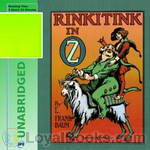 Rinkitink in Oz
Rinkitink in Oz
Rinkitink in Oz is the tenth book in the Oz series written by L. Frank Baum, first published in 1916. It was originally written in 1905 as a stand alone fantasy work and subequently rewritten as an Oz book. Therefore, most of the action takes place outside of Oz in neighboring fairy countries. It tells the story of Prince Inga’s quest to rescue his parents from captivity after his island home is ravaged by enemies. With the help of three magical pearls and the more dubious assistance of the excessively... | |
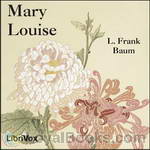 Mary Louise
Mary Louise
The Bluebird Books is a series of novels popular with teenage girls in the 1910s and 1920s. The series was begun by L. Frank Baum using his Edith Van Dyne pseudonym, then continued by at least three others, all using the same pseudonym. Baum wrote the first four books in the series, possibly with help from his son, Harry Neal Baum, on the third. The books are concerned with adolescent girl detectives— a concept Baum had experimented with earlier, in The Daring Twins (1911) and Phoebe Daring (1912)... | |
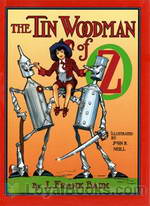 The Tin Woodman of Oz
The Tin Woodman of Oz
The Tin Woodman of Oz is the twelfth Land of Oz book written by L. Frank Baum and was originally published on May 13, 1918. The Tin Woodman is unexpectedly reunited with his Munchkin sweetheart Nimmie Amee from the days when he was flesh and blood. This was a backstory from The Wizard of Oz. | |
 The Sea Fairies
The Sea Fairies
In 1910, Baum hoped to end the Oz series and follow with a new series about a little girl named Trot and her sailor companion, Cap’n Bill. The Sea Fairies (1911) was the first book in the projected series and took Trot and Cap’n Bill under the sea where they had adventures with mermaids and other fantastic creatures. It was followed by Sky Island (1912) and then Baum returned to the Oz titles. He brought Trot and Cap’n Bill to Oz in the Scarecrow of Oz (1915). | |
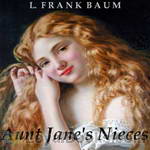 Aunt Jane's Nieces
Aunt Jane's Nieces
Jane Merrick is a wealthy, elderly, difficult invalid woman who is preparing for her approaching death. In her youth, she inherited her money and estate from her fiancé, Thomas Bradley, who died before their wedding took place. With no children of her own, she calls for her three teenage nieces to visit her, so she can decide who will inherit her estate. They are Louise Merrick, Elizabeth De Graf, and Patsy Doyle, children of Jane’s younger brother and sisters. Each of the three cousins is a different type. | |
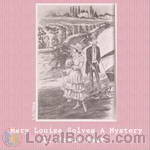 Mary Louise Solves a Mystery
Mary Louise Solves a Mystery
The Bluebird Books is a series of novels popular with teenage girls in the 1910s and 1920s. The series was begun by L. Frank Baum using his Edith Van Dyne pseudonym, then continued by at least three others, all using the same pseudonym. Baum wrote the first four books in the series, possibly with help from his son, Harry Neal Baum, on the third. The books are concerned with adolescent girl detectives— a concept Baum had experimented with earlier, in The Daring Twins (1911) and Phoebe Daring (1912)... | |
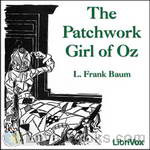 The Patchwork Girl of Oz
The Patchwork Girl of Oz
An unlucky Munchkin boy named Ojo must travel around Oz gathering the ingredients for an antidote to the Liquid of Petrifaction which has turned his beloved uncle Unc Nunkie and the wife of the Liquid's creator into marble statues. Ojo is joined by the patchwork girl Scraps, Dorothy, Dr. Pipt's Glass Cat, the Woozy, the Shaggy Man, the Scarecrow and the Tin Woodman. They eventually visit the Emerald City to ask for help from the Wizard of Oz. | |
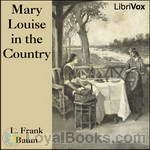 Mary Louise in the Country
Mary Louise in the Country
The Bluebird Books is a series of novels popular with teenage girls in the 1910s and 1920s. The series was begun by L. Frank Baum using his Edith Van Dyne pseudonym, then continued by at least three others, all using the same pseudonym. Baum wrote the first four books in the series, possibly with help from his son, Harry Neal Baum, on the third. The books are concerned with adolescent girl detectives— a concept Baum had experimented with earlier, in The Daring Twins (1911) and Phoebe Daring (1912)... | |
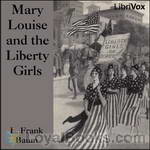 Mary Louise and the Liberty Girls
Mary Louise and the Liberty Girls
The Bluebird Books is a series of novels popular with teenage girls in the 1910s and 1920s. The series was begun by L. Frank Baum using his Edith Van Dyne pseudonym, then continued by at least three others, all using the same pseudonym. Baum wrote the first four books in the series, possibly with help from his son, Harry Neal Baum, on the third. The books are concerned with adolescent girl detectives— a concept Baum had experimented with earlier, in The Daring Twins (1911) and Phoebe Daring (1912)... | |
 Aunt Jane's Nieces Abroad
Aunt Jane's Nieces Abroad
Aunt Jane's Nieces Abroad is the second of the ten book series of Aunt Jane's Nieces. The story continues with the three much loved girls - the sweet and generous Patsy, the cunning Louise, and the sullen Beth. This time they're on a tour of Europe with their down-to-earth uncle John Merrick.The benevolent uncle and his nieces meet mysterious and sinister Victor Valdi, his daughter Tato, and a pretend nobleman, Count Ferralti, who fancies Louise. The story revolves around travel and kidnapping, and the subsequent adventures of the three young girls, told in Baum's own inimitable style that keeps us at the edge of our seats. | |
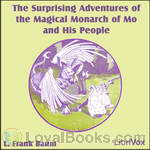 The Surprising Adventures of the Magical Monarch of Mo and His People
The Surprising Adventures of the Magical Monarch of Mo and His People
The Magical Monarch of Mo is a set of stories about the titular king, his queen, and his royal children. The stories are uproariously funny, dealing with topics as absurd as a man losing his temper who then tries to find it, an evil midget who steals a princess's big toe, and an entire city filled with highly civilized monkeys! Join the Monarch and all his friends for a rollicking adventure, filled with fun for the whole family! | |
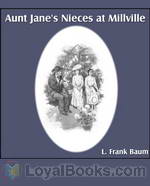 Aunt Jane's Nieces at Millville
Aunt Jane's Nieces at Millville
Aunt Jane's Nieces at Millville is a 1908 young-adult novel written by L. Frank Baum, famous as the creator of the Land of Oz. It is the third volume in "the successful Aunt Jane Series," following Aunt Jane's Nieces and Aunt Jane's Nieces Abroad. Aunt Jane's Nieces at Millville picks up the story of the three cousins, Patsy Doyle, Beth De Graf, and Louise Merrick, soon after their return from Europe in Aunt Jane's Nieces Abroad. As in that earlier book, their benign and eccentric millionaire Uncle John devotes much of his fortune to helping others — an effort managed by Patsy's father, Major Doyle. These efforts do not always yield fiscally sound results... | |
By: Thomas Hardy (1840-1928) | |
|---|---|
 The Return of the Native
The Return of the Native
Amidst the fireworks and celebrations of Guy Fawkes Night, a covered wagon winds its way along the dark country heath land. Hidden at the back is a young woman who is running away from a thwarted marriage ceremony with the local innkeeper. The driver of the wagon, a young herdsman, is secretly in love with her but is so devoted that he vows to help her reunite with her useless lover. The opening scenes of Thomas Hardy's sixth novel The Return of the Native, form the backdrop to this story of a profoundly flawed woman and the men who fall in love with her... | |
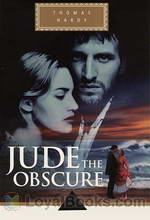 Jude the Obscure
Jude the Obscure
A young man from a poor, working-class background, passionate about education, who aspires to become a professor. His teacher, a respected role model who turns out to have feet of clay. An independent, free-spirited woman. Another who is scheming, selfish and flirtatious. Dominating their lives is the magnificent university town of Christminster. All these and a host of other colorful, memorable characters inhabit the pages of Thomas Hardy's monumental fourteenth novel published in 1895. Thomas Hardy's fame as a novelist rivals that of even Dickens in Victorian literature... | |
 Tess of the d'Urbervilles
Tess of the d'Urbervilles
Her father compels her to visit the biggest mansion in the village to “claim kin” with the aristocratic d'Urberville family. She falls prey to the debauched son of the house and returns home to give birth in secret to an illegitimate baby who lives only for a few days. Determined to put her past behind her, she goes to work as a milkmaid in a faraway country farmhouse where she falls in love with a good and kind young man. Her conscience troubles her and she confesses the truth about herself in a letter which her beloved never receives... | |
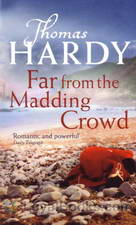 Far From the Madding Crowd
Far From the Madding Crowd
This story opens with a lovely, poor and proud young woman who lives with her aunt. The young woman saves the life of a farmer who subsequently falls in love with her. However, the young woman inherits a fortune and moves away. On the flip side the farmer loses everything he has and travels around the country seeking employment. One evening the farmer helps to put out a blazing fire in a lonely farm. When the veiled owner comes out to thank him, he discovers that she is none other than the beautiful woman who once rejected him and moved away... | |
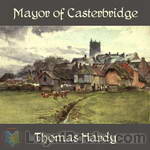 The Mayor of Casterbridge
The Mayor of Casterbridge
Irritated and drunken, an itinerant farm-worker sells his wife and child to a stranger. Thus begins The Mayor of Casterbridge, set in rural and small-town England in the mid-1800s. In the original subtitle, Hardy called this the story of "a man of character," and the central character, Michael Henchard, is one of English fiction's greatest creations. Henchard is deeply developed as a realistic character, but also larger-than-life in the manner of a Greek or Shakespearean tragic hero — huge in his determination and huge in his failings... | |
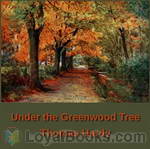 Under the Greenwood Tree
Under the Greenwood Tree
This novel is subtitled The Mellstock Quire, A Rural Painting of the Dutch School. The Quire is the group of musicians who accompany the hymns at the local church and we follow the fortunes of one member, Dick Dewy, who falls in love with the new school mistress, Fancy Day. Another element of the book is the battle between the traditional musicians of the Quire and the local vicar, Parson Maybold, who installs a church organ. This battle illustrates the developing technology being introduced in the Victorian era and its threat to traditional country ways... | |
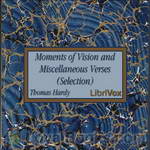 Moments of Vision
Moments of Vision
Hardy claimed poetry as his first love, and published collections until his death in 1928. Although not as well received by his contemporaries as his novels, Hardy’s poetry has been applauded considerably in recent years. Most of his poems deal with themes of disappointment in love and life, and mankind’s long struggle against indifference to human suffering. | |
 A Pair of Blue Eyes
A Pair of Blue Eyes
The book describes the love triangle between a young woman, Elfride Swancourt, and her two suitors from very different backgrounds. Stephen Smith is a socially inferior but ambitious young man who adores her and with whom she shares a country background. Henry Knight is the respectable, established, older man who represents London society. | |
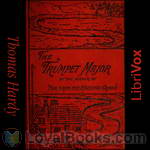 The Trumpet-Major
The Trumpet-Major
Our heroine, Anne Garland, lives quietly in a rural community deep in the English countryside. However, the arrival of several regiments preparing for an expected invasion brings colour and chaos to the county. A graceful and charming young woman, Anne is pursued by three suitors: John Loveday, the trumpet-major in a British regiment, honest and loyal; his brother Robert, a merchant seaman and womaniser, and Festus Derriman, the cowardly son of the local squire. Set at the time of the Napoleonic wars, this is the author’s only historical novel, and unusually for Hardy’s stories, most of the characters live happily ever after. | |
 The Woodlanders
The Woodlanders
The Woodlanders is one of Hardy's later novels, although he originally intended it as a successor to Far From The Madding Crowd. It concerns the life and loves of Giles Winterborne,Grace Melbury,Edred Fitzpiers, Felice Charmond and Marty South.The topics of class,fidelity and loyalty are delt with in Hardys exquisite style and set in the beautiful woodlands of Hintock. | |
 Two on a Tower
Two on a Tower
The plot concerns two – literally starcrossed – lovers: Swithin St. Cleeve, a very young amateur astronomer, and Viviette Constantine, an unhappily married and abandoned woman 8 or 9 years his senior. Each night Swithin climbs the old tower of the title, in the grounds of the Constantine estate. Lady Constantine, whose husband has been absent some years on an extended hunting and exploring journey to Africa, joins the young man in his stargazing, and supports his astronomical ambitions by buying him equipment, though his dreams of scientific renown are disappointed.Their relationship then deepens and takes several twists and turns. | |
 Life's Little Ironies; A Set Of Tales With Some Colloquial Sketches Entitled A Few Crusted Characters
Life's Little Ironies; A Set Of Tales With Some Colloquial Sketches Entitled A Few Crusted Characters
Eighteen short stories by a master story teller. | |
 Desperate Remedies
Desperate Remedies
Cytherea Graye is poor, but accepts a post as lady's maid to the eccentric Miss Aldclyffe, the woman whom her father had loved but had not been able to marry. Cytherea in turn loves a young architect, Edward Springrove; but will Miss Adclyffe's machinations, the knowledge that Edward is already engaged to a woman whom he does not love, and the urgent need to support her sick brother drive Cytherea to accept the hand of Aeneas Manston? Will true love triumph in the end or will she be forced to live a life of misery with a man she doesn't love? ( Michele Eaton ) | |
 Changed Man And Other Tales
Changed Man And Other Tales
Eleven short stories. | |
 Wessex Poems
Wessex Poems
A collection of poetry by Thomas Hardy, some of which were previously published or adapted into his prose works. | |
 The Dynasts
The Dynasts
| |
 Late Lyrics and Earlier
Late Lyrics and Earlier
| |
 Group of Noble Dames
Group of Noble Dames
The pedigrees of our county families, arranged in diagrams on the pages of county histories, mostly appear at first sight to be as barren of any touch of nature as a table of logarithms. But given a clue—the faintest tradition of what went on behind the scenes, and this dryness as of dust may be transformed into a palpitating drama. Out of such pedigrees and supplementary material most of the following stories have arisen and taken shape. | |
 Romantic Adventures of a Milkmaid
Romantic Adventures of a Milkmaid
A milkmaid, Margery, encounters a mysterious foreigner and perhaps prevents him from committing suicide. In gratitude, the man offers her any reward she can name. She tells him she wants to go to a ball. He takes her, admittedly a bit reluctantly, to a yeoman's ball in a neighboring county. From there the story continues because of course, a lot happens after the ball. She happens to already have an engagement to a local lad but his hold over her seems to grow of its own accord. This Hardy story may not end the way you wish, but that is often true of stories by this master writer. | |
 A Laodicean: a Story of To-day
A Laodicean: a Story of To-day
| |
 Time's Laughingstocks
Time's Laughingstocks
| |
By: H. G. Wells (1866-1946) | |
|---|---|
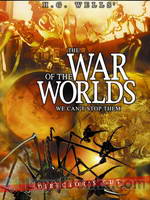 The War of the Worlds
The War of the Worlds
Extraterrestrial invasion, the earth taken over by omniscient intelligences from Mars, the whole of humanity under siege and a nameless narrator who seems to be the lone survivor of the complete devastation of human civilization – scenes from a Hollywood sci-fi blockbuster? Far from it! The War of the Worlds by HG Wells was written more than a century ago and went on to become an iconic work in the science fiction genre, spawning a whole new genre of literature featuring alien invaders. It was in fact the first book to present the idea of conflict between inhabitants of different planets... | |
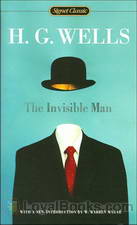 The Invisible Man
The Invisible Man
One dark and stormy night, a stranger arrives in West Sussex at a village inn. He is heavily clad in an overcoat and his face is wrapped in bandages. He takes a room at the inn, but refuses to socialize with anyone. He stays cooped up in his room all day and night, working with strange chemicals and apparatus. Suddenly, strange events begin to happen in the village. Mysterious burglaries and fires break out, culminating in a destructive rampage across the peaceful countryside. The stranger is the keeper of a terrible secret... | |
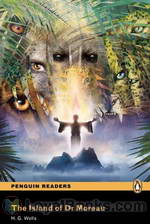 The Island of Dr. Moreau
The Island of Dr. Moreau
One of the first instances of science fiction, Wells’ classic tale published in 1986 examines various controversial philosophical issues active at the time of its publication, most notable being the implications of vivisection and degeneration. Narrated by its everyman protagonist Edward Prendick, the novel follows the events of his stay at a mysterious island, home to ghastly secrets, horrors, and incomprehensible experiences. Furthermore, the novel features innovative themes which have become iconic in the modern science fiction genre, including moral and ethical responsibility, evolution, and man’s interference with the course of nature... | |
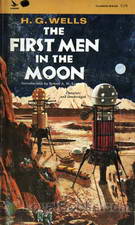 The First Men in the Moon
The First Men in the Moon
Written nearly seven decades before Neil Armstrong's historic “Giant leap for Mankind” this book by one of the most influential sci-fi writers in English is an interesting read. The First Men in the Moon by Herbert George Wells, the English author who is today called the Father of Science Fiction, describes a strange and fantastic voyage. Businessman and budding playwright, John Bedford takes a sabbatical from his work and decides to write a play. He moves to a lonely cottage in Kent where he hopes to come up with a theatrical masterpiece... | |
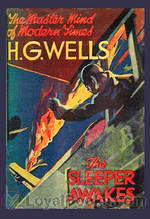 The Sleeper Awakes
The Sleeper Awakes
Originally serialized from 1898 to 1903, Wells later made some crucial changes to the piece to create a flawless dystopian science fiction novel published in 1910 and renamed The Sleeper Awakes. The novel focuses on an Englishman, who falls in a deep sleep lasting two centuries, and sees him wake up in an unrecognizable setting and extremely wealthy. An enthralling tale of dystopian society depicted through a colorful imagination, The Sleeper Awakes concentrates on topics including dystopia, political power, religion, plutocracy, and individual and social awakening... | |
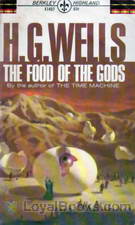 The Food of the Gods and How it Came to Earth
The Food of the Gods and How it Came to Earth
Two stuffy English scientists, always looking to further their scientific knowledge, create a substance called Herakleophorbia, which in its fourth incarnation – known as Herakleophorbia IV – has the special ability of making things increase greatly in size. As the scientists begin experimentation on some chicks, the substance is misused by some “country folk” who don’t take it seriously and soon Herakleophorbia IV is running rampant throughout England and then across the globe, creating giant plants and animals that wreak havoc on the land and then the people... | |
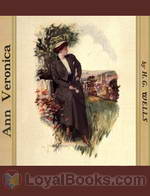 Ann Veronica
Ann Veronica
Ann Veronica was a controversial book detailing the development of a naive school girl into a “New Woman”. When it was published, the Spectator described it as a “poisonous book … capable of poisoning the minds of those who read it.” Although it is unlikely to offend modern listeners in this way, this novel addresses many feminist issues that are still relevant today. | |
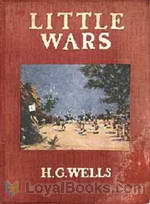 Little Wars (A Game for Boys)
Little Wars (A Game for Boys)
Miniature wargaming got its start with the publication in 1913 of this thoroughly entertaining little account of how H.G. Wells, with certain of his friends, took their childhood toys and turned play into acceptable middle-aged sport by subjecting the exercise to the civilizing influence of actual rules. While wargaming progressed far past these beginnings, Wells observes how “little wars” with even his elementary rules can suggest the wholesale crudity of the real thing. “You have only to play at Little Wars three or four times to realise just what a blundering thing Great War must be... | |
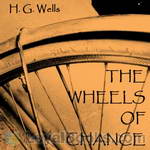 The Wheels of Chance
The Wheels of Chance
“The Wheels of Chance – A Bicycling Idyll” follows the adventures of a Drapers Assistant who, having brought an ancient bicycle, sets off on a 2 week tour of the countryside. He encounters a Lady in Grey wearing rationals (bloomers). And his world will never be the same again | |
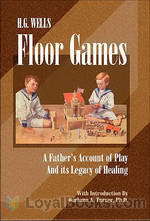 Floor Games
Floor Games
H.G. Wells had so much fun playing with his children on the floor of their playroom, he decided to write a jovial little book to inspire other parents in their pursuit of quality time with the kids. While the raw materials available from hobby stores of his day were woefully short of the variety and quality of what can be bought easily now, he and his sons created their own worlds to rule. This short work describes two games of imagination played out upon the floor of his home – an archipelago of islands, and a thoroughly integrated city, conveniently organized with two mayoral positions for his sons “G... | |
 The World Set Free
The World Set Free
Radioactive decay is a major theme in the novel The World Set Free, published in 1914. Wells explores what might happen if the rate of decay could be sped up. The book may have encouraged scientists to explore theories of nuclear chain reaction. It also served as a vehicle for Wells to develop his ideas on survival of the human race. | |
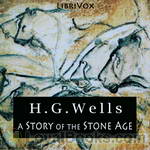 A Story of the Stone Age
A Story of the Stone Age
This story is of a time beyond the memory of man, before the beginning of history. . . | |
By: Jack London (1876-1916) | |
|---|---|
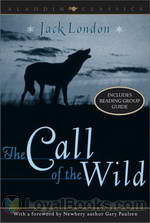 The Call of the Wild
The Call of the Wild
Call of the Wild is an emotional rollercoaster of a novel set during the late 19th century Klondike Gold Rush. The central character is Buck, an Alaskan sled dog who is forced to adjust to the cruel climate in order to survive. If you have even a remote love of dogs then you will fall head over heels in love with this book. In fact, take away the fact that Buck is a dog and the story is the same, a struggle against greed and to live a life of freedom. London spent a year in Yokel researching the book, making it extremely detailed, very simplistic in its descriptions and genuinely heartfelt... | |
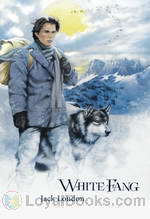 White Fang
White Fang
Hugely popular among younger readers, White Fang by Jack London was a runaway hit when it first debuted in 1906, as a serial story in the Outing magazine. Since then it continues to enjoy immense acclaim and popularity as a coming of age allegory where a nonconformist youngster is transformed into a responsible citizen. The most appealing aspect of White Fang is that it's told from the point of view of an animal, in this case an Alaskan Husky. Like Black Beauty by Anna Sewell, White Fang also addresses ethical issues, social injustices and cruelty to our four footed friends... | |
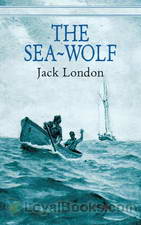 The Sea Wolf
The Sea Wolf
A maritime classic acclaimed for its exciting adventure, The Sea Wolf offers a thrilling tale of life at sea, while exploring the many difficulties that may erupt on board a ship captained by a brutally hedonistic and controlling individual. Additionally, the psychological adventure novel covers several themes including mutiny, existentialism, individualism, brutality, and the intrinsic will to survive. The novel sets into motion when its protagonist, the soft and cultivated scholar Humphrey van Weyden, is witness to a precarious collision between his ferry and another ship... | |
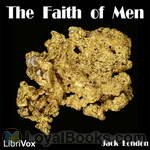 The Faith of Men
The Faith of Men
A collection of short stories by author Jack London | |
 John Barleycorn or Alcoholic Memoirs
John Barleycorn or Alcoholic Memoirs
Jack London died at the age of forty. In this autobiographical work, London describes his life as seen through the eyes of John Barleycorn (alcohol). There is much controversy about the cause of his death just as there is about alcoholism and addiction. London’s brutally frank and honest analysis of his own struggles and bouts with alcohol was way before its time and more modern theories of addiction. With remarkable candor and insight, London describes the demons and gods he encountered through both friend and enemy, John Barleycorn. | |
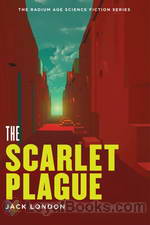 The Scarlet Plague
The Scarlet Plague
Known mainly for his tales of adventure, this work of science fiction by Jack London is set in a post-apocalyptic future. It’s 2072, sixty years after the scarlet plague has depopulated the planet. James Howard Smith is one of the few survivors of the pre-plague era left alive in the San Francisco area, and as he realizes his time grows short, he tries to impart the value of knowledge and wisdom to his grandsons. Through his narrative, we learn how the plague spread throughout the world and of the struggles of the handful of survivors it left in its wake. The Scarlet Plague was originally published in London Magazine in 1912. | |
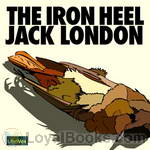 The Iron Heel
The Iron Heel
A dystopian novel about the terrible oppressions of an American oligarchy at the beginning of the Twentieth Century, and the struggles of a socialist revolutionary movement. (Introduction by Matt Soar) | |
 The Cruise of the Snark
The Cruise of the Snark
The Cruise of the Snark (1913) is a memoir of Jack and Charmian London’s 1907-1909 voyage across the Pacific. His descriptions of “surf-riding”, which he dubbed a “royal sport”, helped introduce it to and popularize it with the mainland. London writes: Through the white crest of a breaker suddenly appears a dark figure, erect, a man-fish or a sea-god, on the very forward face of the crest where the top falls over and down, driving in toward shore, buried to his loins in smoking spray, caught up by the sea and flung landward, bodily, a quarter of a mile... | |
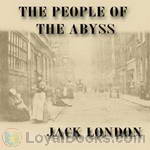 The People of the Abyss
The People of the Abyss
Jack London lived for a time within the grim and grimy world of the East End of London, where half a million people scraped together hardly enough on which to survive. Even if they were able to work, they were paid only enough to allow them a pitiful existence. He grew to know and empathise with these forgotten (or ignored) people as he spoke with them and tasted the workhouse, life on the streets, … and the food, which was cheap, barely nutritious, and foul.He writes about his experiences in... | |
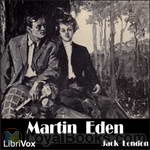 Martin Eden
Martin Eden
Martin Eden (1909) is a novel by American author Jack London, about a struggling young writer. It was first serialized in the Pacific Monthly magazine from September 1908 to September 1909, and subsequently published in book form by The Macmillan Company in September 1909.This book is a favorite among writers, who relate to Martin Eden's speculation that when he mailed off a manuscript, 'there was no human editor at the other end, but a mere cunning arrangement of cogs that changed the manuscript from one envelope to another and stuck on the stamps,' returning it automatically with a rejection slip... | |
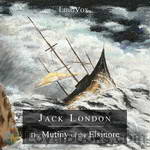 The Mutiny of the Elsinore
The Mutiny of the Elsinore
This is the story of a voyage of a sailing ship from Baltimore to Seattle, east-to-west around Cape Horn in the winter. It is set in 1913 and the glory days of “wooden ships and iron men” are long over. The Elsinore is a four-masted iron sailing vessel carrying a cargo of 5000 tons of coal. She has a “bughouse” crew of misfits and incompetents. This book was published in 1915 and some actions of some of the characters seem odd to us today. There is romance, but it is strangely platonic. Two important characters disappear with no real explanation... | |
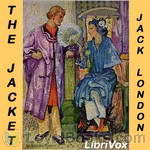 The Jacket (or Star Rover)
The Jacket (or Star Rover)
This book by Jack London was published under the name of "The Jacket" in the UK and "The Star Rover" in the US. A framing story is told in the first person by Darrell Standing, a university professor serving life imprisonment in San Quentin State Prison for murder. Prison officials try to break his spirit by means of a torture device called "the jacket," a canvas jacket which can be tightly laced so as to compress the whole body, inducing angina. Standing discovers how to withstand the torture by entering a kind of trance state, in which he walks among the stars and experiences portions of past lives... | |
 Love of Life and Other Stories
Love of Life and Other Stories
| |
 A Collection of Stories
A Collection of Stories
| |
 Valley of the Moon
Valley of the Moon
The novel Valley of the Moon is a story of a working-class couple, Billy and Saxon Roberts, struggling laborers in Oakland at the Turn-of-the-Century, who left the city life behind and searched Central and Northern California for a suitable farmland to own. The book is notable for the scenes in which the proletarian hero enjoys fellowship with the artists' colony in Carmel, and he settles in the Valley of the Moon. | |
 Burning Daylight
Burning Daylight
Burning Daylight, Jack London's fictional novel published in 1910, was one of the best selling books of that year and it was his best selling book in his lifetime. The novel takes place in the Yukon Territory in 1893. The main character, nicknamed Burning Daylight was the most successful entrepreneur of the Alaskan Gold Rush. The story of the main character was partially based upon the life of Oakland entrepreneur "Borax" Smith. (Wikipedia) | |
 Before Adam
Before Adam
"Before Adam is a mixture of sound science and sci-fi speculation. It is based around Darwin's theory of evolution and the idea of racial memory. The main character lives in the current world but has dreams and nightmares that he relives the pre-stone age life of one of his proto-human ancestors. Those who are scientifically inclined may enjoy this novel more than fans of "standard" science fiction such as Edgar Rice Burroughs. | |
 When God Laughs, and Other Stories
When God Laughs, and Other Stories
This collection of Jack London's short stories touches on a variety of topics, from his love of boxing, to relationships between criminals, to the trials of life and travel on many frontiers, to an allegory about a king who desired a nose. London is considered a master of the short story, a form much more to his liking and personality than his novels. He was active and quick of mind and the short story suited him well. | |
 Brown Wolf and Other Jack London Stories
Brown Wolf and Other Jack London Stories
| |
 The Son of the Wolf
The Son of the Wolf
| |
 Children of the Frost
Children of the Frost
| |
 Road
Road
Jack London credited his skill of story-telling to the days he spent as a hobo learning to fabricate tales to get meals from sympathetic strangers. In The Road, he relates the tales and memories of his days on the hobo road, including how the hobos would elude train crews and his travels with Kelly’s Army. | |
 Stories of Ships and the Sea
Stories of Ships and the Sea
5 Exciting short stories by one of Americas best story tellers | |
 Daughter of the Snows
Daughter of the Snows
In Jack London's first novel, he tells the story of Frona Welse, a strong and interesting heroine, "a Stanford graduate and physical Valkyrie," who heads to the Yukon gold fields after creating a stir in her hometown by being strong and forthright and by befriending the town's prostitute. In the course of her adventures, she finds herself at the distaff point of a love triangle. This novel contains very overt racial and gender stereotypes and as such reflects the attitudes growing in society at the time it was written. It is the practice at Librivox to record works as they stand, without judgment. | |
 Adventure
Adventure
| |
 War of the Classes
War of the Classes
| |
 Smoke Bellew
Smoke Bellew
| |
 Moon-Face
Moon-Face
| |
 Dutch Courage and Other Stories
Dutch Courage and Other Stories
Jack London was quoted as saying, "I've never written a line that I'd be ashamed for my young daughters to read, and I never shall write such a line!" After his death in 1916, his wife Charmian assembled a collection of stories, most of which he had written for young readers, but at least one of which was for more mature readers, "Whose Business is to Live." Like most of London's work, his short stories could be read by young readers and then again when they were older with mature minds. These stories draw from London's own extensive experience in the world and demonstrate the dictum that "good writing is good writing" no matter for whom it was written. | |
 The God of His Fathers: Tales of the Klondyke
The God of His Fathers: Tales of the Klondyke
| |
 The House of Pride, and Other Tales of Hawaii
The House of Pride, and Other Tales of Hawaii
| |
 Jerry of the Islands
Jerry of the Islands
| |
 By The Turtles of Tasman
By The Turtles of Tasman
Turn of the century sibling rivalry between successful but uptight California businessman and his ne'er-do-well older brother, both widowers with equally-different 20-ish daughters. Written in 1911. | |
 The Little Lady of the Big House
The Little Lady of the Big House
| |
 A Son Of The Sun
A Son Of The Sun
| |
 Revolution, and other Essays
Revolution, and other Essays
A collection of 13 essays written between 1900 and 1908, published in 1910. The lead essay, "Revolution", outlines how and why London renounced capitalism as a failed social system and declared himself an active participant in the "socialist revolution", the last essay is an autobiographical piece, and the essays in between are on diverse subjects. A few of the “essays” are actually humorous short fiction stories; others are serious, sometimes angry rants against capitalistic greed and political corruption. All of the pieces are thought-provoking and excellently written, though only loosely intellectual, highly opinionated, and rife with contradiction, as was London himself. | |
 Michael, Brother of Jerry
Michael, Brother of Jerry
| |
 Tales of the Fish Patrol
Tales of the Fish Patrol
Wildest among the fisher-folk may be accounted the Chinese shrimp-catchers. It is the habit of the shrimp to crawl along the bottom in vast armies till it reaches fresh water, when it turns about and crawls back again to the salt. And where the tide ebbs and flows, the Chinese sink great bag-nets to the bottom, with gaping mouths, into which the shrimp crawls and from which it is transferred to the boiling-pot. This in itself would not be bad, were it not for the small mesh of the nets, so small that the tiniest fishes, little new-hatched things not a quarter of an inch long, cannot pass through... | |
 The Acorn-Planter A California Forest Play (1916)
The Acorn-Planter A California Forest Play (1916)
| |
 The Kempton-Wace Letters
The Kempton-Wace Letters
| |
 On the Makaloa Mat
On the Makaloa Mat
| |
By: Douay-Rheims Version | |
|---|---|
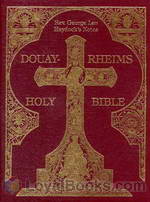 The Bible, Douay-Rheims Version (DV) - Judith
The Bible, Douay-Rheims Version (DV) - Judith
The Douay-Rheims Bible (abbreviated as DV) is a translation of the Bible from the Latin Vulgate into English made by members of the English College, Douai, in the service of the Catholic Church. The New Testament portion was published in Reims, France, in 1582, in one volume with extensive commentary and notes. The Old Testament portion was published in two volumes thirty years later by the University of Douai. The first volume, covering Genesis through Job, was published in 1609; the second, covering Psalms to 2 Machabees plus the apocrypha of the Clementine Vulgate... | |
By: Edgar Rice Burroughs (1875-1950) | |
|---|---|
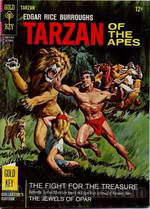 Tarzan of the Apes
Tarzan of the Apes
An aristocratic English family is marooned off the coast of West Africa. They find their way into the interior of the dense jungle that lines the coast and here, Lord Greystoke is killed by a predatory ape. Lady Greystoke survives with her infant boy, but in a few months, she too succumbs to the perils of jungle life. The baby is adopted by a maternal she-ape who nurses him along with her own child. This marks the dawn of a legend – Tarzan of the Apes. Edgar Rice Burroughs was an American novelist who turned to fiction writing after an unsuccessful stint as a pencil sharpener salesman... | |
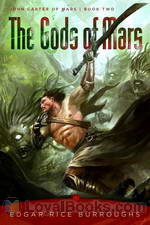 The Gods of Mars
The Gods of Mars
Burroughs’ second book in the classic Barsoom series, The Gods of Mars is a scientific fiction novel following the adventures of John Carter as he returns to Mars after a ten year hiatus in the hope of being reunited with his wife, child and the Red Martian people. First published as a five-part serial in a pulp magazine in the course of 1913, the novel was later published as a whole in 1918. A tale of audacity, honor, optimism, and perseverance, Burroughs successfully builds on to the previous book allowing a broader view of the Red Planet... | |
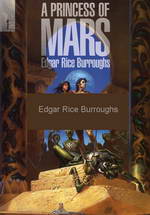 A Princess of Mars
A Princess of Mars
Burroughs’ first published book, as well as the first book in the Barsoom series, A Princess of Mars is a science fiction novel following the adventures of the heroic John Carter, after he is mysteriously transported to the planet Mars where he meets its divided inhabitants. The novel is considered to be a seminal for the planetary romance, which is a sub-genre of science fantasy. Burroughs’ book has also inspired a number of well known science fiction writers during the beginning of the 20th century... | |
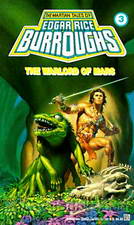 Warlord of Mars
Warlord of Mars
Warlord of Mars by Edgar Rice Burroughs was first published in 1913. It was the third book in an eleven part series known as the Barsoom Chronicles which relate to a sequence of exciting adventure tales set on the fictional planet of Barsoom. In the Barsoom series, Mars, assumed to be older than Earth, is a dying planet. “Barsoom” is the native word for Mars in the Martian language. The stories first appeared in serialized form in various magazines like All-Story, Argosy, Amazing Stories and The Blue Book... | |
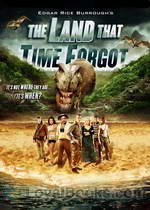 The Land that Time Forgot
The Land that Time Forgot
Off the coast of Greenland, a man finds a floating thermos bottle. Wedged tightly inside is a sheaf of papers covered with minute handwriting. As he begins to read, a fantastic tale begins to unwind. The writer, on his way to a WWI battlefield was shipwrecked and his entire regiment except for a woman and his faithful dog are killed. The three are rescued by a passing British tug, but fall prey to the schemes of a German spy aboard. They are then captured by the crew of a German U-boat. After many near mishaps, they sail towards Greenland... | |
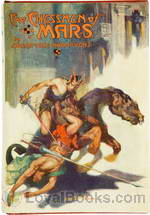 The Chessmen of Mars
The Chessmen of Mars
If you're a sci-fi fan, then you've probably heard of Edgar Rice Burroughs' famous Barsoom series of science fiction fantasy novels. Set in the “dying planet” Mars, the ten books in the series portray an Earthman, John Carter and his astral journey to the Red Planet, his marriage with a native princess and his descendants. The Chessmen of Mars is the fifth book in the Barsoom set, written in 1921 and published in serial form in Argosy magazine over the period of a year. Here, John Carter's daughter Tara meets Prince Gahan of the Gathol kingdom, but takes an instant dislike to the young and fashionable man, feeling that he is just a shallow youth... | |
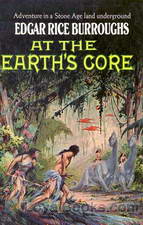 At the Earth's Core
At the Earth's Core
This is the first book in the Pellucidar series. Pellucidar is a fictional Hollow Earth milieu invented by Edgar Rice Burroughs for a series of action adventure stories. The stories initially involve the adventures of mining heir David Innes and his inventor friend Abner Perry after they use an “iron mole” to burrow 500 miles into the earth’s crust. (adapted from Wikipedia) | |
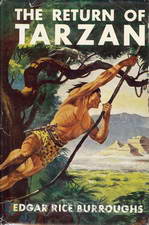 The Return of Tarzan
The Return of Tarzan
The novel picks up where Tarzan of the Apes left off. The ape man, feeling rootless in the wake of his noble sacrifice of his prospects of wedding Jane Porter, leaves America for Europe to visit his friend Paul d’Arnot. On the ship he becomes embroiled in the affairs of Countess Olga de Coude, her husband, Count Raoul de Coude, and two shady characters attempting to prey on them, Nikolas Rokoff and his henchman Alexis Paulvitch. | |
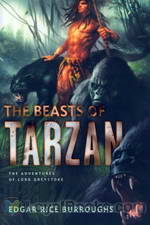 The Beasts of Tarzan
The Beasts of Tarzan
Originally featured as a five-part serial in All-Story Cavalier magazine in 1914 and later published in book form in 1916, The Beasts of Tarzan is the third book in the gripping Tarzan series. Shifting from London to the natural African scenery, the novel follows Tarzan as he finds himself in the wicked ploy of old enemies, which launches him into a mission to save his beloved wife and son, while also caring for his own welfare. Furthermore, he must go back to his previous life and reclaim his position as king of the jungle... | |
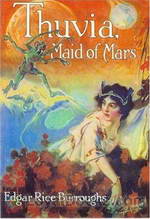 Thuvia, Maid of Mars
Thuvia, Maid of Mars
Published in 1920, Thuvia, Maid of Mars is the fourth book in the Barsoom series and concentrates on Carthoris, the son of infamous John Carter, and Thuvia, the princess of Ptarth, as they find themselves entangled in a complex web of love and strict traditions of Barsoom. A typical Burroughs piece, the installment contains all the required elements of an effective pulp fiction, including a hero, a damsel in distress, unforeseen complications, and a generous supply of action. Welcoming a new... | |
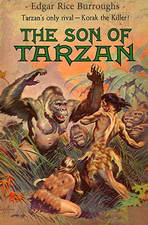 Son of Tarzan
Son of Tarzan
This is the fourth of Burrough’s Tarzan novels. Alexis Paulvitch, a henchman of Tarzan’s now-deceased enemy, Nikolas Rokoff, survived his encounter with Tarzan in the third novel and wants to even the score. (adapted from Wikipedia) | |
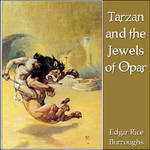 Tarzan and the Jewels of Opar
Tarzan and the Jewels of Opar
This is the fifth of Burrough’s Tarzan novels. Tarzan finds himself bereft of his fortune and resolves to return to the jewel-room of Opar, leaving Jane to face unexpected danger at home. | |
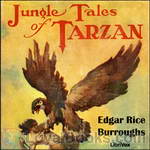 Jungle Tales of Tarzan
Jungle Tales of Tarzan
Jungle Tales of Tarzan is a collection of twelve loosely-connected short stories written by Edgar Rice Burroughs, comprising the sixth book in order of publication in his series about the title character Tarzan. Chronologically, the events recounted in it actually occur between chapters 12 and 13 of the first Tarzan novel, Tarzan of the Apes. | |